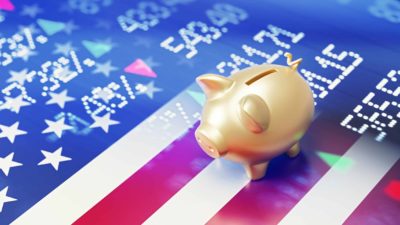This article was originally published on Fool.com. All figures quoted in US dollars unless otherwise stated.
High-flying electric vehicle leader Tesla (NASDAQ: TSLA) knocked one out of the park during the first quarter of 2021. Total revenue increased 74% from a year ago, and net income hit a new record of $438 million. However, the usual boost to the headline profitability metric (the sale of regulatory credits) was joined by yet another controversial line item: The sale of Bitcoin (CRYPTO: BTC). Nevertheless, the company's free cash flow operating metric shows this automaker is rapidly approaching a profitable scale even without the aid of any footnotes.
EV credits and cryptos are only part of the story
First, let's address the $438 million in net income. Tesla detractors will often point to the company's sale of regulatory credits as being the primary driver of bottom-line profitability. Indeed, at $518 million in the first quarter, the sale of these credits (which Tesla receives from some governments for renewable energy, and which it can sell to other companies that need the credits to offset their carbon footprint) did the heavy pulling once again on the bottom line. As other automakers ramp up their own EV efforts in the coming years, this source of revenue isn't likely to be as lucrative as it is now.
As for Bitcoin, Tesla made waves back in February when it said it used $1.5 billion in cash from its balance sheet to buy Bitcoin. However, before the end of the first quarter, it promptly sold some of it for a net gain of $101 million. Potential legal ramifications aside (owing to CEO Elon Musk's frequent tweeting about cryptos and a checkered past with the Securities and Exchange Commission), Bitcoin won't be a sustainable source of income either. It instead used its purchase to jump-start acceptance of the cryptocurrency as a form of payment for cars.
Personally, I think the sale of regulatory credits and Bitcoin are opportunistic plays on the part of Tesla. I hear the argument that neither source of income is going to last forever, but bear in mind Tesla is still a relatively small manufacturer that is trying to rapidly scale across the globe. It's getting creative with how it tries to fund the cost of said expansion, and it's paying off. Free cash flow (which includes income from regulatory credits, excludes Bitcoin proceeds, but also subtracts capital expenditures like the purchase of property and equipment that isn't fully recognized in net income) was positive $293 million during the first quarter. For the sake of comparison, this basic profitability metric was negative $895 million one year ago.
What does that imply? It implies Tesla is rapidly reaching a very profitable scale all on its own. When backing out the extra $164 million in regulatory credits it sold ($518 million this year versus $354 million in the first quarter of 2020), Tesla's operations generated $995 million more free cash flow year over year. More importantly, it's closing in on break-even, even without the help of regulatory credit sales.
|
Metric |
Q1 2020 |
Q1 2021 |
|---|---|---|
|
Regulatory credit sales (included in net cash provided by operating activities) |
$354 million |
$518 million |
|
Net cash provided by (used in) operating activities |
($440 million) |
$1.64 billion |
|
Capital expenditures |
($455 million) |
($1.35 billion) |
|
Free cash flow |
($895 million) |
$293 million |
Data source: Tesla.
An argument that no longer holds any water
Tesla delivered nearly 185,000 EVs during the first three months of the year, all of which were built at just two factories: One in Fremont, California, and the other in Shanghai, China. The big jump in capital expenditures this last quarter is attributable to new factories under construction in Berlin and Texas, and the ongoing expansion of the factory in Shanghai. These are big projects. Once complete and auto production begins, Tesla's free cash flow is on track for even more dramatic increases as those capital expenditures ease. No doubt new factory projects will break ground to support future EVs like Cybertruck and Semi, but capital expenditures will nonetheless decrease as a percentage of revenue over time.
Put another way, the argument that Tesla's profitability is only attributable to unsustainable sources of income doesn't hold water. Sure, it's juicing the bottom line with regulatory credits and Bitcoin, but that's simply creative and opportunistic activity. Businesses are supposed to make hay when the sun is shining. Perhaps Tesla's methods are unconventional, but that doesn't mean its manufacturing business is a slouch. Rather, its young manufacturing operation is simply getting some help while it scales to the point where it can sustain itself.
Whether all of this warrants Tesla stock's premium price tag is a different story altogether. But it is time to stop the commentary that Tesla's EV business isn't profitable without regulatory help -- because it is indeed well on its way.
This article was originally published on Fool.com. All figures quoted in US dollars unless otherwise stated.









